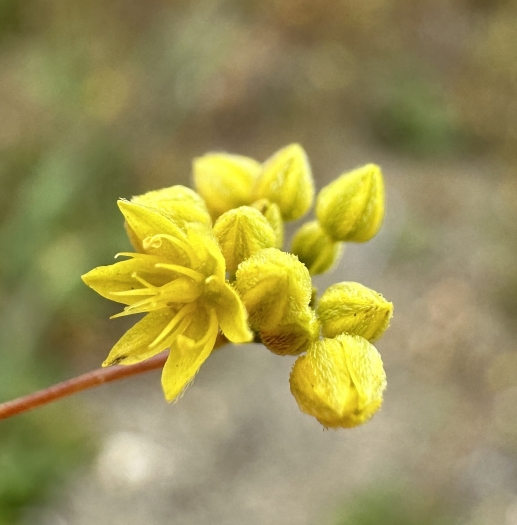Hoover’s Deserttrumpet
(Eriogonum clavatum)
Hoover’s Deserttrumpet (Eriogonum clavatum)
/
/

Matt Berger
CC BY 4.0
Image By:
Matt Berger
Recorded By:
Copyright:
CC BY 4.0
Copyright Notice:
Photo by: Matt Berger | License Type: CC BY 4.0 | License URL: http://creativecommons.org/licenses/by/4.0/ | Rights Holder: Matt Berger | Publisher: iNaturalist | Date Created: 2023-05-06T19:22:38Z |

























Estimated Native Range
Summary
Eriogonum clavatum, commonly known as Hoover’s Deserttrumpet or Rodney’s Wild Buckwheat, is a perennial shrub native to the arid regions of Western North America, particularly in desert mountains and dry, rocky hillsides. It typically grows at a moderate rate to a height and width of 1-2 feet (0.3-0.6 meters). This plant is characterized by its erect, clavate (club-shaped) inflorescences with yellow, showy flowers that bloom in the summer, attracting pollinators such as bees and butterflies. The foliage is typically gray-green and may have a woolly texture, adding to its visual interest.
Hoover’s Deserttrumpet is valued for its drought tolerance and ability to thrive in challenging environments, making it a suitable choice for xeriscaping and rock gardens. Its showy yellow flowers and unique form make it an attractive addition to water-wise landscapes. In cultivation, it requires full sun exposure and well-drained, sandy soils. It is adapted to low water conditions and is an excellent choice for gardeners seeking low-maintenance plants. While it is not commonly afflicted by diseases, overwatering can lead to root rot. It is also important to note that this plant should not be over-fertilized, as it is adapted to nutrient-poor soils.CC BY-SA 4.0
Hoover’s Deserttrumpet is valued for its drought tolerance and ability to thrive in challenging environments, making it a suitable choice for xeriscaping and rock gardens. Its showy yellow flowers and unique form make it an attractive addition to water-wise landscapes. In cultivation, it requires full sun exposure and well-drained, sandy soils. It is adapted to low water conditions and is an excellent choice for gardeners seeking low-maintenance plants. While it is not commonly afflicted by diseases, overwatering can lead to root rot. It is also important to note that this plant should not be over-fertilized, as it is adapted to nutrient-poor soils.CC BY-SA 4.0
Plant Description
- Plant Type: Shrub
- Height: 1-2 feet
- Width: 1-2 feet
- Growth Rate: Moderate
- Flower Color: Yellow
- Flowering Season: Summer
- Leaf Retention: Deciduous
Growth Requirements
- Sun: Full Sun
- Water: Low
- Drainage: Fast
Common Uses
Drought Tolerant, Low Maintenance, Rock Garden, Showy Flowers
Natural Habitat
Native to arid regions of Western North America, particularly in desert mountains and dry, rocky hillsides
Other Names
Common Names: Rodney’s Wild Buckwheat, Rodney’s Buckwheat
Scientific Names: , Eriogonum clavatum, Eriogonum trichopes subsp. clavatum, Eriogonum trichopes var. hooveri,
GBIF Accepted Name: